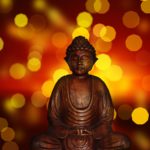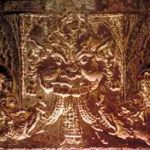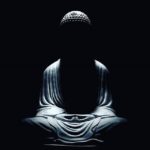Recent Comments
- Chodpa on The Place where the Primordial Speaks
- Chodpa on The Cuckoo of Presence
- Afzar on Bodhidharma’s teacher, Prajnatara
- Vajragoni on Audiobook is released
- Scott on Audiobook is released
-
Recent Posts
Categories
- A Darkness Visible
- A Docetic Assessment
- A Mystical Odyssey through the Sagathakam
- AI Creations
- Akṣayamatinirdeśasūtra
- Akṣhobhya’s Pure Land
- Ālaya-vijñāna
- Anūnatvāpūrṇatvanirdeśaparivarta
- Ariyapariyesanā Sutta
- Ascending the Noble Mountain of Primordial Perfection
- Asceticism
- Ashtavakra Gita in Light of the Unborn
- Audiobook
- Bankei Zen
- Beyond the Ascent
- Beyond the Rainbow Body
- Black Dragon Eye Mandala
- Bodhicitta
- Buddhadharma
- Buddhism’s Black Holes
- Buddhist Anecdotes
- Buddhist Hells
- Buddhist Meditations on the Tarot
- Chuang-Tzu
- Contemporary Musings
- Ḍākiṇī
- Dāsbodh
- Dharmakaya Abbey
- Dharmakaya Stick
- Divine Revelation
- Doctrine of the Void
- Dust Contemplation
- Ekacitta: Advanced Studies in Dark Zen
- Entry into the Dharmadhātu
- Eremitical Dhyani Meditations
- Exploring the Book of Revelation
- Gnostikos
- Hsin Hsin Ming
- Journey to the Center of the Mind
- Karma and Rebirth
- Korean Sŏn
- Kulayarāja Tantra—The Motherly Buddha
- Little Office of Our Lady of the Void
- LSD and Psychedelic Buddhism
- Māṇḍukya Kārikā
- Mañjuśrī Teaches Prajñāpāramitā
- Māra and Satan
- Meister Eckhart
- Mud and Water: Bassui Zen
- Mystagogia
- Nirvana
- Notes from the Iron Stupa
- Nothingness in Nāgārjuna and John of the Cross
- Obscure Religious Cults
- Preparation for the Afterlife
- Primordial Qigong
- Reflections on the Saṃdhinirmocana Sūtra
- Spirituality
- Springtime with Tozen
- Terma: A Mind Film by Vajragoni
- The Afterglow
- The Awakening of Faith
- The Bhagavad Gita
- The Book of Bodhi
- The Cloud of Unknowing in Light of the Unborn
- The Diamond Sutra
- The Divine Ātman
- The Divine Liturgy of Vajrasattva
- The Doctrine of Awakening
- The Dragon Mind of Zen Tarot
- The Elucidation of Consciousness
- The Experience of No-Self
- The Great Perfection of the Unborn Mind: A Book of Privy Counseling
- The Heart Sutra
- The Hermit's Den
- The Khaggavisāṇa Sutta: A Rhinoceros Horn
- The Lankavatara Sutra
- The Lankavatarian Book of the Dead
- The Lion's Roar of Queen Śrīmālā
- The Lotus Sutra
- The Mahāparinirvāṇasūtra
- The Naga Chronicles
- The Platform Sutra
- The Ratnagotravibhāgaśāstra
- The School of the Spirit
- The Secret Golden Light of the Unborn
- The Soul
- The Śūrańgama Sūtra
- The Sutra of Primordial Enlightenment
- The Tathāgatagarbhatārā Tantra
- The Udāna
- The Unborn Mind Mythos
- The Unborn Mind Sessions
- The Unborn Odyssey: A Novel
- The Vajrasamādhi Sutra
- The Vimalakirti Sutra
- The Yogasūtras of Patañjali
- The Zen Teaching of Bodhidharma
- The Zen Teaching of Instantaneous Awakening
- The Zen Teachings of Huang Po
- Theologia Mystica
- Tozen Teaching
- Tsung-mi: An Intimate Study
- Unborn I Ching
- Unborn Light Reiki
- Uncategorized
- Vasubandhu and the Absolute
- Wisdom from the Masters
- Wordsworth and Zen
- Yoga of the Manomayakāya
- Zen
- Zuowang
Archives
- October 2024
- August 2024
- February 2024
- January 2024
- December 2023
- November 2023
- October 2023
- September 2023
- August 2023
- July 2023
- June 2023
- May 2023
- April 2023
- March 2023
- February 2023
- January 2023
- December 2022
- November 2022
- October 2022
- September 2022
- August 2022
- May 2022
- April 2022
- March 2022
- February 2022
- January 2022
- December 2021
- November 2021
- October 2021
- September 2021
- August 2021
- May 2021
- April 2021
- March 2021
- February 2021
- January 2021
- December 2020
- November 2020
- October 2020
- September 2020
- August 2020
- May 2020
- April 2020
- March 2020
- February 2020
- January 2020
- December 2019
- November 2019
- October 2019
- September 2019
- August 2019
- June 2019
- February 2019
- January 2019
- December 2018
- October 2018
- August 2018
- April 2018
- March 2018
- February 2018
- January 2018
- December 2017
- November 2017
- October 2017
- September 2017
- August 2017
- May 2017
- April 2017
- March 2017
- February 2017
- January 2017
- December 2016
- November 2016
- October 2016
- September 2016
- August 2016
- July 2016
- May 2016
- April 2016
- March 2016
- February 2016
- January 2016
- December 2015
- November 2015
- October 2015
- September 2015
- August 2015
- July 2015
- June 2015
- May 2015
- April 2015
- March 2015
- February 2015
- January 2015
- December 2014
- November 2014
- October 2014
- September 2014
- August 2014
- May 2014
- April 2014
- March 2014
- February 2014
- January 2014
- December 2013
- November 2013
- October 2013
- September 2013
- August 2013
- May 2013
- April 2013
- March 2013
- February 2013
- January 2013
- December 2012
- November 2012
- October 2012
- September 2012
- August 2012
- May 2012
- April 2012
- March 2012
- February 2012
- January 2012
- December 2011
- November 2011
- October 2011
Meta
Category Archives: The Mahāparinirvāṇasūtra
Highlights from the Mahāparinirvāṇasūtra

Reflecting back upon the introductory blog from this series, along with the analysis of the Self from contemporary scholars like Dr. Tony Page and Dr. Chris Jones, the other salient construct revolved around Shimoda Masahiro’s hypothesis that the early stupa-based communities discovered the “hidden Buddha Nature” best in context of a sutra-based formulation. This construct indicated that the primary catalyst for such a shift was sparked by the early dharmakathika, or (Dharma masters). At the time of writing this I stated, “During our exegesis of the Mahāparinirvāṇasūtra hopefully some pertinent passages will affirm [these] assertions.” The forthcoming “highlights” of the series will indicate the nature of this shift and the “spirit-behind” such a noble direction.
The Moon Parable

The Mahāparinirvāṇasūtra makes excellent use of parables in order to construct analogies as to the True Buddha Nature. The Moon Parable stands out in analogizing how the cycles of the Moon reflect the perennial nature of the Tathagata.
Posted in The Mahāparinirvāṇasūtra
Tagged body of the Tathagata, Dharmatic Light, eclipse, Icchantikas, Karma, moon, Shining Ones
Leave a comment
Entering the Garbha-Self

Number Twelve is the flagship chapter for the Mahāparinirvāṇasūtra; it further details the True Nature of the Self and then highlights its salvific context as, “After hearing this sutra one thereupon understands that all living beings possess Buddha-nature, and this is the reason why I expound the Mahāparinirvāṇasūtra.”
Origin of the One who Suffers

Chapter Ten: On the Four Truths
There’s an interesting copy of this chapter translated by Charles Patton found on the old Dark Zen website. The notable difference from other copies concerns the line, “That which is called [the sufferer] is not called the noble truth of suffering.” The translation otherwise found says “That which is called [suffering].” Whatever the reason was for the change, it fits in perfectly with the main thrust of the chapter as “the origin of the one who suffers”. The subsequent exegesis will further explain this examination. The opening line will include the change as found at that Dark Zen site.
Dharma of the Evil One

Chapter Nine: On Good and Evil
(Mark L. Blum translation):
As a carry-over from the last chapter, Kāśyapa inquires from the Blessed One as to whether or not one should continue to depend upon and find refuge in the āryapudgala during his absence. The Buddha responds in the affirmative, stating that they counteract the powers of the evil one:
Posted in The Mahāparinirvāṇasūtra
Tagged anuttarā samyaksaṃbodhi, Docetic-Factor, duṣkṛta, Māra Pāpīyas, pārājika, sexual impropriety
3 Comments
The Fab-Four

Chapter Eight: The Four Dependables
(Mark L. Blum translation):
The Buddha said:
Good man, within this Subtle Sutra of the Great Nirvana there are four kinds of people who capably protect the true-dharma, promote the true-dharma, and keep the true-dharma in their thoughts. They bring much in the way of blessings and mercy to the world, for they are supports for the world, [sources of] tranquil bliss for humans and gods alike.
Posted in The Mahāparinirvāṇasūtra
Tagged anāgāmin, Arhat, āryapudgala, bodhicitta, Buddha Vehicle, catuḥpratisaraṇa, Dharmata, mindstream, sakṛdāgāmin, srotaāpanna
Leave a comment
Modes of Liberation

At the beginning of Part II of Chapter Seven a discussion arises as to the exact nature of “the hidden treasury”. The Real Treasury of the Tathagatas was covered in Chapter Three with the quote from Zen Master Keizan’s Transmission of Light: “I have the treasury of the eye of truth, the ineffable mind of nirvana.” The Blessed One explains to Kāśyapa the inner-core of this realization:
A Lion’s Earring

Chapter Seven is a vast potpourri covering more ethical and proper propriety (right choice of meat and wine) issues for both monks and laity, but the real meat of this interval revolves around the Nature of the Tathagata, in particular in terms of permanency, spectacular prowess at transformational abilities, and how nirvanic Tathagatahood constitutes liberation. The Yamamoto-Page translation lumps them altogether as one-chapter, whereas the Blum translation (wisely so) bifurcates them into separate bodies. We have chosen the course of the latter and will subdivide the seventh chapter into two parts.
The Virtue of the Tathāgata

Although brief in length, Chapter Six on the Virtue of the Name is nonetheless expansive and bold in execution in terms of bringing home the message and import of the Mahāparinirvāṇasūtra. It even makes the bold proclamation that it’s consequential weight far and above transcends the significance of any other sutra.
A Docetic Mirror

As was stated in the introductory blog to this series, Chapter Five on The Adamantine Body will directly mirror what was covered in a Dharma-series last year entitled A Docetic Assessment. So once again, at this junction in the sutra, we will be engaging Michael Radich and his examination of the docetic factor in light of the Mahāparinirvāṇasūtra. Recall that Docetic Buddhology is the belief that the Buddha only has “an apparent” material body. Radich argues that, in light of the first part of this chapter, that the Tathāgata’s true body is the dharmakāya-cum-vajrakāya. All this is broken down as follows (fully extracted from the aforementioned series):
